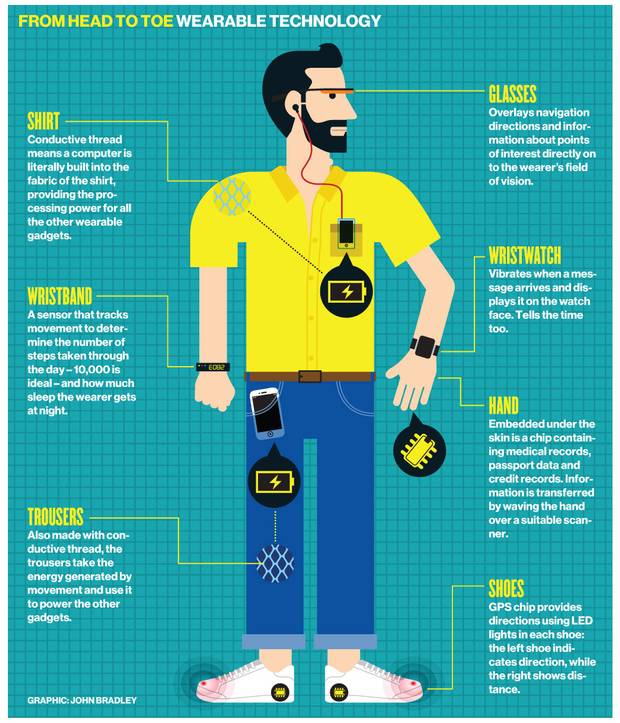Although iWatch has been occupying the Apple faithful since its concept was unveiled (and now since its release keeps sliding into the future), “wearables” or sensors that people wear have been developing for some time.

Basically, wearables measure body activity. The earliest wearable was possibly the pedometer. Pressing a button told you how many steps taken in a given period. Now wearables not only are configured for a plethora of activities and body measurements, they also connect digitally to create a Big Data digital record of YOU.
More Than a Sport Watch
The iWatch tells more than the time, and wearables aren’t just wristband mediums. Wearables are headsets or eye wear (think Google glass), gloves and clothes, and even sensors embedded under your skin or in your body. The prevalence and low entry cost (<$75) of wristband wearable technology demonstrates the nascent entry of technology from the keyboard to personal experience.
Wearables are both active and passive. Like taking a picture, the wearable can actively, measure specific events, such as running times, rates, distances, efficiency. Passively, the wearable can be “always on” to record your rest and active periods, heart rates, body temperature to name but a few.
No “One Size Fits All”
Wearables meet a variety of needs, and as such, the products range from “tactical” (military grade) to the tamer upgraded pedometer model. TROY ANGRIGNON has a great overview on his blog page. If you are interested in choosing one for your sport or activity level, this page is a great resource to begin looking before pricing to show what is available and best suited for a particular sport or level of activity.

Not Just Fitness
The function and capability of wearables does not stop and start with fitness and sports. Wearables are used in business for virtual reality, warehousing, telecommunications, and even bookkeeping. Wearables are a natural fit for medical monitoring. Non-invasive blood glucose and pressure and oxygen levels are just one example. Of course, wearables have become mainstream in military operations and police enforcement.

Big Data Bigger Picture
With this brief overview of wearable technology, it is easy to appreciate the volume and variety of data collecting over what was possible 5-10 years ago. (Heck, even last year.) The next few posts will dive deeper into the plethora of sensors that exist today and that continue to create the Big Data world around each of us – smart watch or not.
What’s in your wallet? (Because soon anyone can find out)

